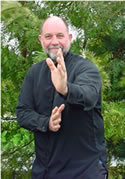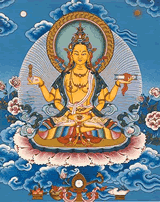Chapter 33
"One who knows others is clever, but one who knows himself is enlightened.
One who conquers others is powerful, but one who conquers himself is mighty.
One who knows contentment is rich and one who pushes with vigor has will.
One who loses not his place endures.
One who may die but will not perish, has life everlasting."
- Translated by Daisetsu Teitaro Suzuki and Paul Carus, 1913, Chapter 33
"It is wisdom to know others;
It is enlightenment to know one's self.
The conqueror of men is powerful;
The master of himself is strong.
It is wealth to be content;
It is willful to force one's way on others.
Endurance is to keep one's place;
Long life it is to die and not perish."
- Translated by R. B. Blakney, 1955, Chapter 33
"Knowing others is wisdom;
Knowing the self is enlightenment.
Mastering others requires force;
Mastering the self needs strength.
He who knows he has enough is rich.
Perseverance is a sign of willpower.
He who stays where he is endures.
To die but not to perish is to be eternally present."
- Translated by Gia-fu Feng and Jane English, 1989, Chapter 33
"He who knows other men is discerning; he who knows himself is intelligent.
He who overcomes others is strong; he who overcomes himself is mighty.
He who is satisfied with his lot is rich; he who goes on acting with energy has a firm will.
He who does not fail in the requirements of his position, continues long.
He who dies and yet does not perish, has longevity."
- Translated by James Legge, 1891, Chapter 33
"He who knows others is intelligent;
he who understands himself is enlightened;
he who is able to conquer others has force,
but he who is able to control himself is mighty.
He who appreciates contentment is wealthy.
He who dares to act has nerve;
if he can maintain his position he will endure,
but he, who dying does not perish, is immortal."
- Translated by Dwight Goddard, 1919, Chapter 33
Tao Te Ching by Lao Tzu: Introduction, Bibliography, Commentary, Chapter Index


















